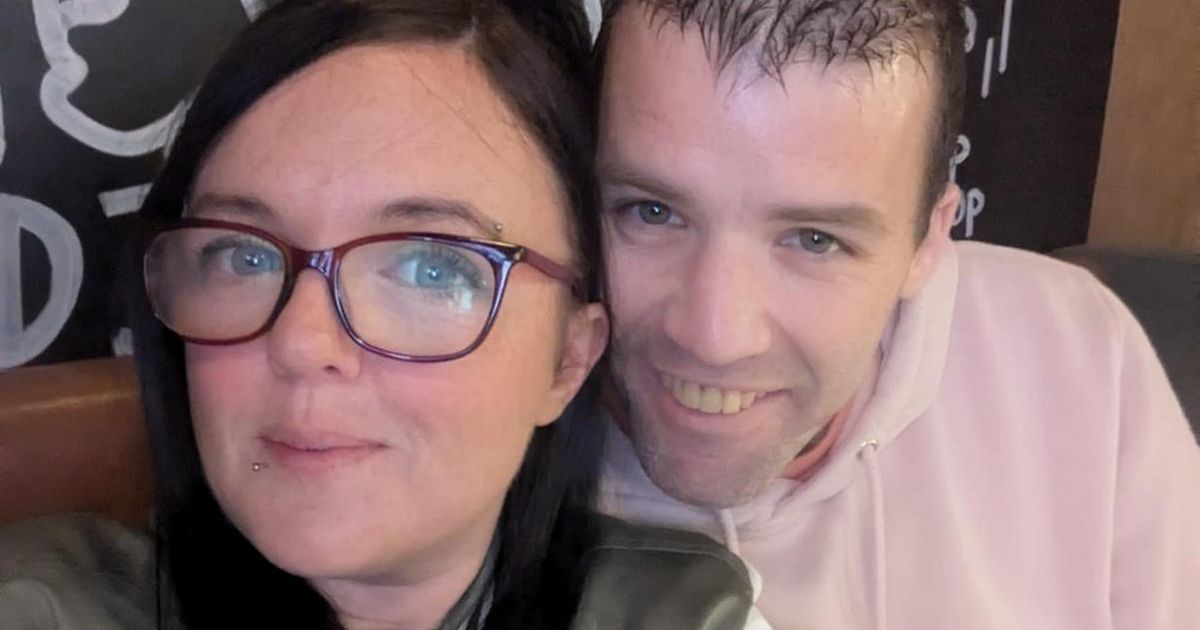“It was extremely frustrating and it got to the point where I probably lost trust in my GP because I knew they weren’t going to do anything.”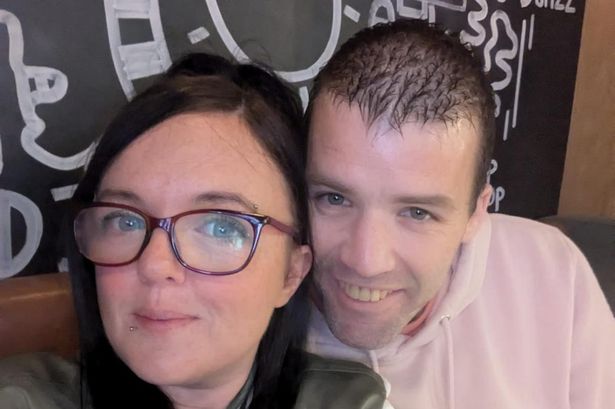 Julie with her fiance Stephen.(Image: PA)
Julie with her fiance Stephen.(Image: PA)
A Scots mum who suffered back pain for 10 years before a tumour was found inside her spinal cord is set to walk down the aisle on crutches at her wedding.
Julie Coleman, from Glasgow, first experienced discomfort in her back and legs in 2014, during her pregnancy with son Connor, now 10. She was told by her GP it was due to sciatica, and her symptoms would likely subside after giving birth.
When her “shooting” leg pains persisted, the 33-year-old spent the best part of 10 years visiting different GPs at her surgery to voice her concerns, but only received painkillers and referrals for physiotherapy.
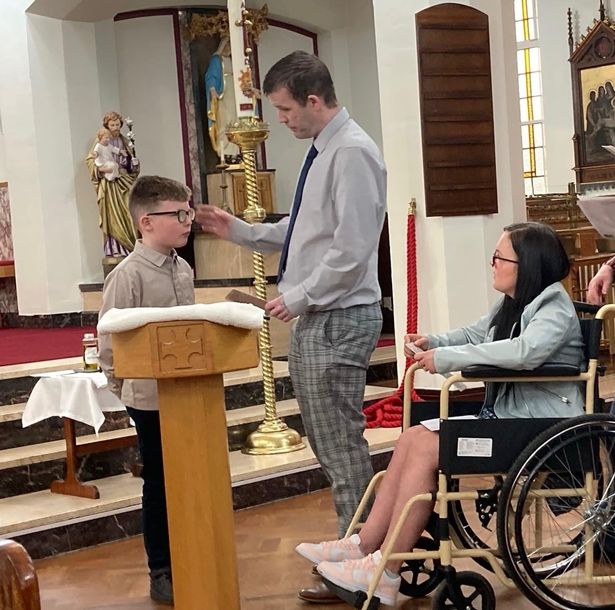 The family at ten-year-old Connor’s recent baptism. (Image: PA)
The family at ten-year-old Connor’s recent baptism. (Image: PA)
She explained: “I was told it was sciatica caused by a slipped disc in my back. They said there’s no point sending you for any scans because the back surgery is too dangerous.
“It was extremely frustrating and it got to the point where I probably lost trust in my GP because I knew they weren’t going to do anything.
“I was going to several different GPs within the same practice and they were all saying the same thing. I just thought this is me for the rest of my life.”
 Julie Coleman, pictured with her son Connor and fiance Stephen, was told that she risked paralysis if she did not have surgery to remove the tumour.(Image: PA)
Julie Coleman, pictured with her son Connor and fiance Stephen, was told that she risked paralysis if she did not have surgery to remove the tumour.(Image: PA)
By 2022, Julie also started experiencing numbness in her right foot, which started in her toes and began “creeping” into her foot.
She said she “lost trust” in her practice and believed she would be in pain “for the rest of my life”. However, after seeing a new physiotherapist, she was finally referred for an MRI scan in November 2024, which showed concerning changes.
On January 9, she had an appointment with a neurosurgeon at the Queen Elizabeth University Hospital, and a full MRI of her back and head, which revealed the benign tumour inside her spinal cord, suspected to be the cause of her years of agony.
She said: “I was really shocked as I had been trying to say something was wrong the whole time.”
Julie was told there was a risk she could become paralysed in future with nerve damage caused by the tumour, and an operation to remove it would be the best course of action.
Even with the surgery, she was told there could be risks and some of her symptoms may not be “reversed”.
Julie had the operation to remove the tumour on January 28, and she said she was “very grateful” to the doctors who treated and supported her.
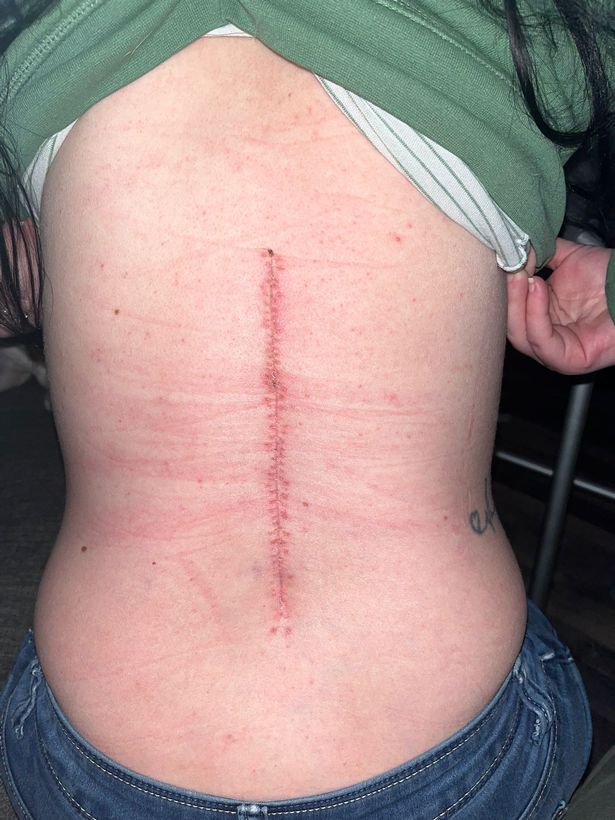 Julie “lost trust” in her GP practice after going back and forward with concerns about her pain and symptoms.(Image: PA)
Julie “lost trust” in her GP practice after going back and forward with concerns about her pain and symptoms.(Image: PA)
She said the surgery was “successful” and most of the tumour was removed, but as some fragments could remain, and is due to have another MRI scan in August to get a clearer picture.
Tests were also conducted on the tumour where it was found to be a schwannoma, an uncommon, non-cancerous tumour that covers the nerves, according to Cancer Research UK.
 Join the Daily Record WhatsApp community!
Join the Daily Record WhatsApp community!
Get the latest news sent straight to your messages by joining our WhatsApp community today.
You’ll receive daily updates on breaking news as well as the top headlines across Scotland.
No one will be able to see who is signed up and no one can send messages except the Daily Record team.
All you have to do is click here if you’re on mobile, select ‘Join Community’ and you’re in!
If you’re on a desktop, simply scan the QR code above with your phone and click ‘Join Community’.
We also treat our community members to special offers, promotions, and adverts from us and our partners. If you don’t like our community, you can check out any time you like.
To leave our community click on the name at the top of your screen and choose ‘exit group’.
If you’re curious, you can read our Privacy Notice.
Despite the success of the operation, the damage to Julie’s nerves may have been done – as she was diagnosed with a spinal cord injury while in hospital and she cannot feel anything below her right knee.
Since returning home on February 18, Julie uses a Zimmer frame to move around her home and needs a wheelchair for longer distances.
 The family at ten-year-old Connor’s recent baptism. (Image: PA)
The family at ten-year-old Connor’s recent baptism. (Image: PA)
She said: “I have random patches on my legs and stomach that are completely numb. Most of my pain was down my right leg so that has obviously had the most damage to the nerves.”
Julie added it could take up to two years to determine whether her symptoms will be permanent as there is a chance her feeling could return.
She and her fiance, Stephen, are due to tie the knot in July – and Julie said her son Connor will be walking her down the aisle, where she will use crutches.
She said: “Of course, I hadn’t imagined this would be how I would walk down the aisle and no-one grows up thinking one day they won’t be able to walk down the aisle unassisted.
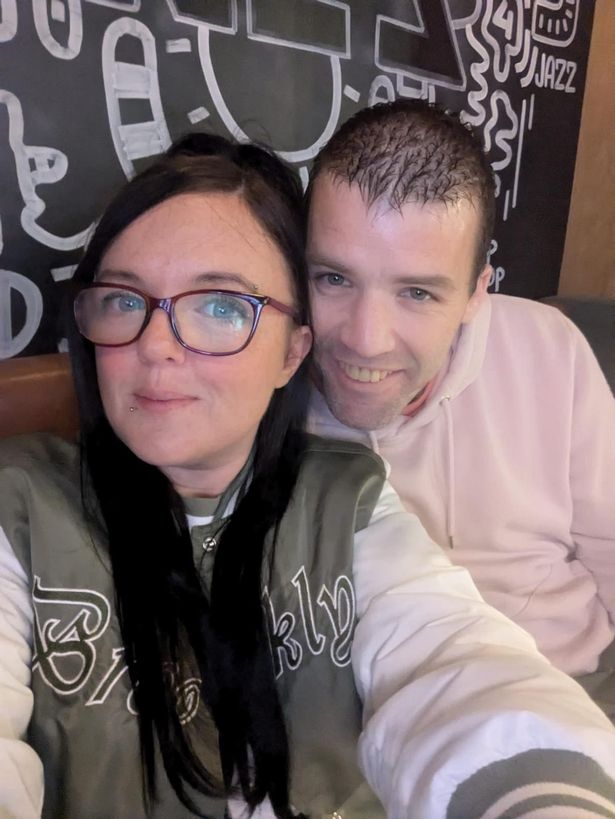 Julie with her fiance Stephen.(Image: PA)
Julie with her fiance Stephen.(Image: PA)
“I was determined to walk down the aisle if it was a possibility and I’m very grateful I’m able to walk down – even if I do need a walking aid.
“I think we take our bodies for granted and if you feel something isn’t right, keep pushing for answers.”
Julie has also launched a GoFundMe page to help her and her family with any unexpected costs due to her condition, raising £225 so far.
To find out more, visit Julie’s fundraiser here: gofundme.com/f/help-julie-cover-unexpected-costs-after- spinal-cord-tumour
